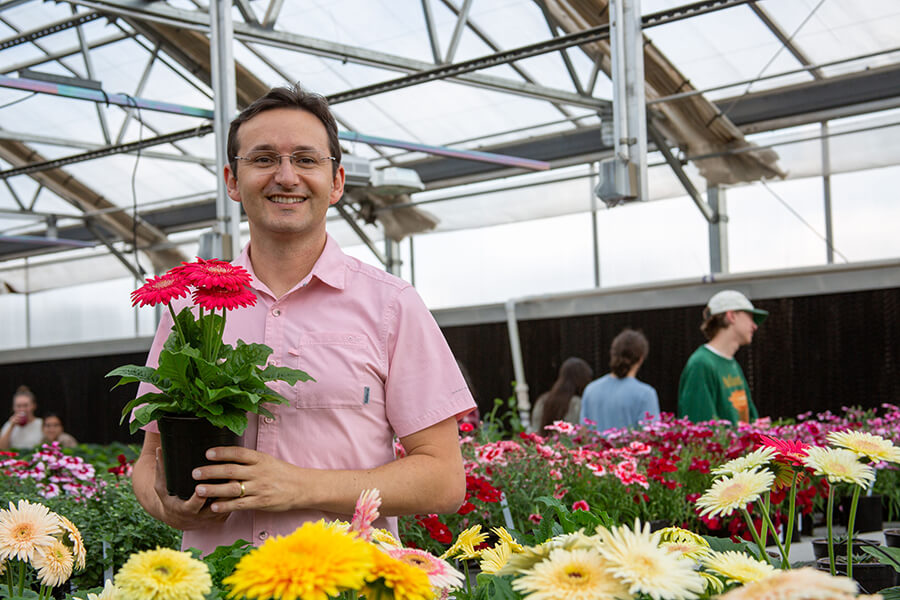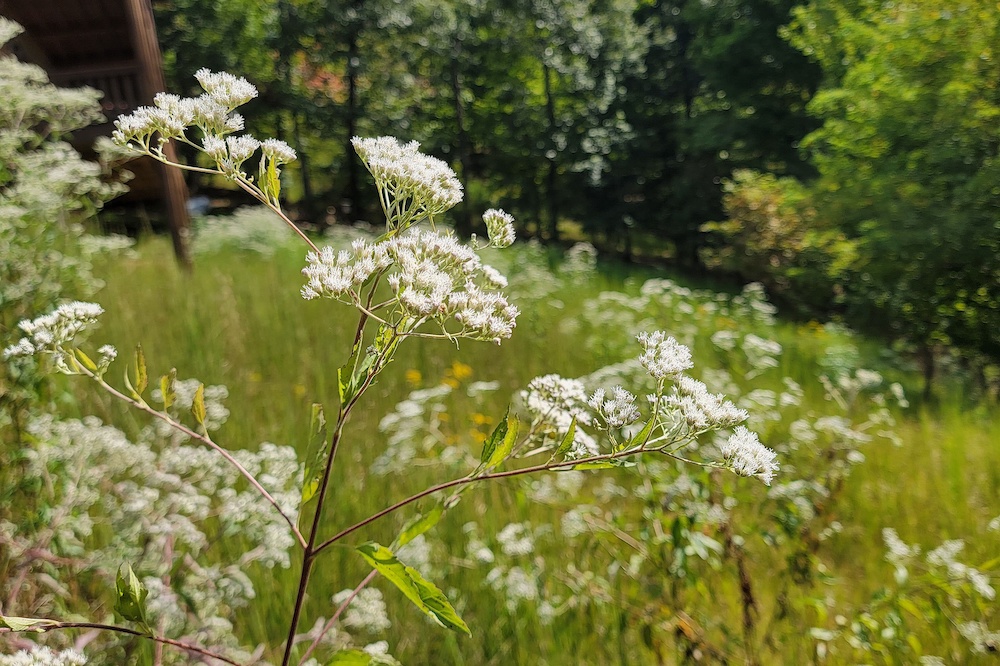Plucking fresh fruit from your own orchard can be a delicious way to add beauty and taste to your home landscape. The best time to plant fruit trees in Georgia is in the fall, according to a University of Georgia expert.
“Growing fresh fruit can be rewarding and fun but can also provide its share of frustration,” said Bob Westerfield, a horticulturist with the UGA Cooperative Extension.
To start on the right path, choose an appropriate site.
“Fruit trees will grow and produce in a broad range of soil types, but the best yields and longest-lived trees occur on loamy, well-drained soil,” he said.
Avoid sites where water collects after a heavy rain and areas with poorly drained clay. Trees planted in full sun will yield the most fruit. A minimum of six hours of sunlight is needed for fruit trees to produce, but 8 to 10 hours is better.
Next, choose a young tree, one about one year old.
“Experience has shown that younger trees bear almost as soon, are easier to keep alive and develop into more healthy vigorous trees than do oversized stock,” Westerfield said. “The older trees cost more to grow and are sold by higher prices, but are usually worth less.”
When digging the hole, bigger is better, Westerfield says.
“If planting container fruit trees, the hole should be at least twice the size of the root ball,” he said. “Holes for planting bare root trees should be wide enough to accommodate the longest roots so they can spread out.”
Do not add potting soil, fertilizer or any other soil amendments to the planting hole. Backfill the hole with the soil you dug up.
Planting
To plant, hold the tree in place so the graft union is just above ground level. Begin filling the hole with soil. Be sure to tamp backfill soil thoroughly to eliminate air pockets. Add a few gallons of water to settle the soil before completely filling the hole.
Trees should be pruned immediately after planting. Cut the main shoot back to 30 inches above the ground at planting.
“This procedure allows branches to form at desired levels, improves the strength of the tree and provides a balance between the top and the roots,” Westerfield said. “Initial pruning is important. It will set the tone for the future growth of the tree.”
Prune trees in late winter when the weather is mild or in early spring before growth starts.
“Training the limbs of young trees is as important as making proper pruning cuts,” he said. “Those scaffold limbs selected to be the main framework should be spread out and held in a horizontal position to widen the angle with the main trunk and encourage early fruit bud formation and resulting early fruit production.”
Wait until spring to fertilize with 5-10-10 ratio of mixed fertilizer.
Varieties
There are many great cultivars of fruit that can be planted in Georgia, but select varieties best adapted to your soil and climatic conditions.
Apple varieties suitable for the southern part of Georgia are Anna and Dorsett Golden, he said. Varieties that do well in the upper two-thirds of the state include Ginger Gold, Gala, Mollie’s Delicious, Ozark Gold, Golden Delicious, Mutzu, Yates and Granny Smith.
There are many varieties of figs available, but only a few are well adapted to Georgia. For the mountain regions, select a protected site and try Celeste or Hardy Chicago. In the piedmont, Celeste, Hardy Chicago and Conadria are fairly well adapted. South of the fall line, any of the varieties listed can be grown, but Celeste and Conadria are two of the best. If you would like to extend the season with a late-ripening variety, plant Alma.
Recommended pear varieties for south Georgia include Hood, Floradahome, Baldwin, Spalding and Warren. Orient, Carrick Waite, Kieffer, Magness, Moonglow, Starking Delicious and Dawn do well in middle to north Georgia.
Japanese plum varieties recommended for Georgia are Methley, Morris, AU Rubrum, AU Producer, Spring Satin, Byrongold and Rubysweet.
Dwarf trees are perfect for home gardens, Westerfield said. They can produce fruit earlier than standardized trees, occupy less space and can be more easily pruned and sprayed.
“Whichever variety you choose, be sure it grows in your area of the state and be sure to provide a pollination variety if it needs one,” he said.
Apple, pear and plum trees should be planted in pairs for pollination. Peach and nectarines are self-fruitful. Your local UGA Extension office can provide information on the best varieties for your area and pollinator recommendations.







